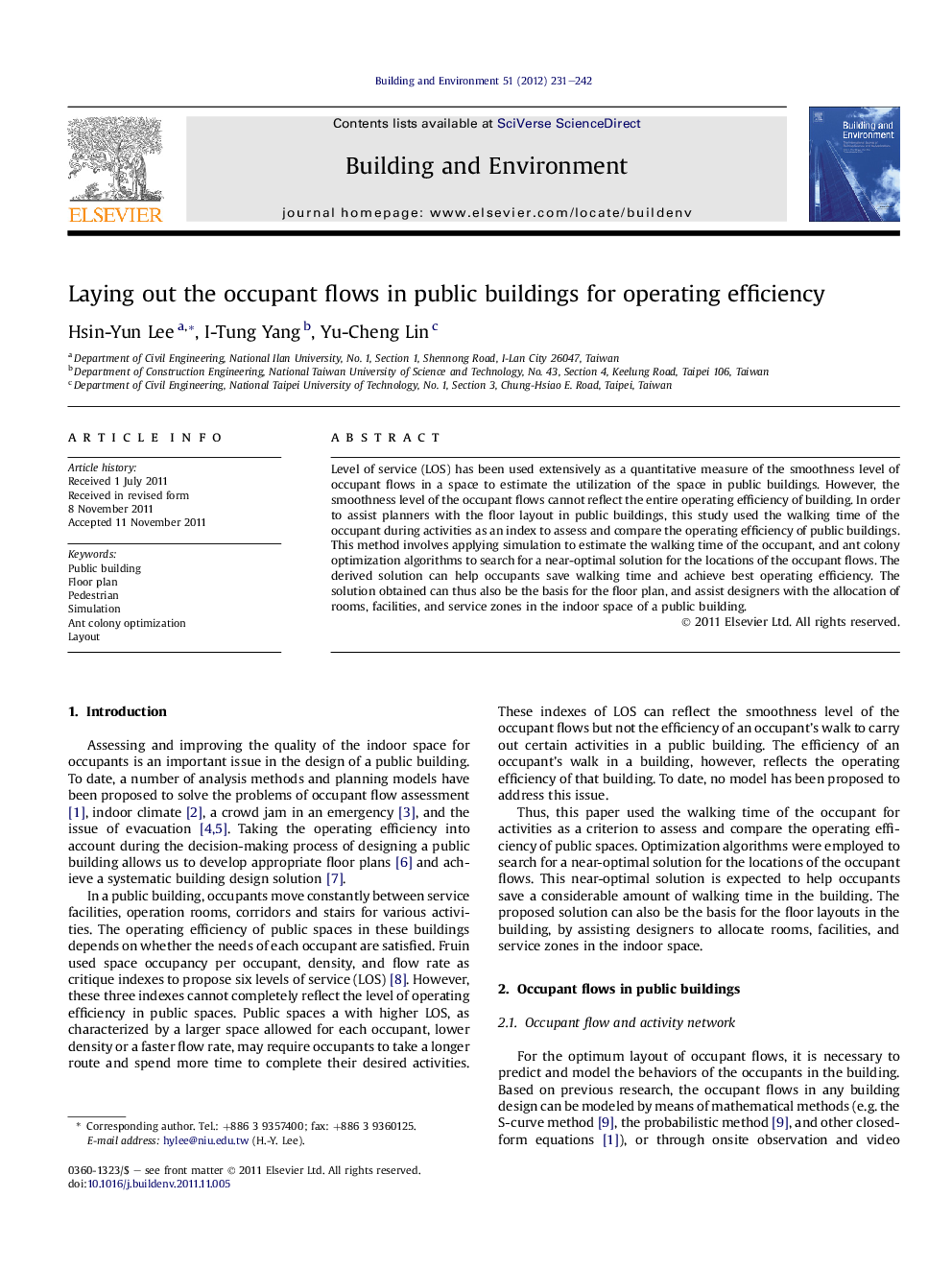| Article ID | Journal | Published Year | Pages | File Type |
|---|---|---|---|---|
| 248477 | Building and Environment | 2012 | 12 Pages |
Level of service (LOS) has been used extensively as a quantitative measure of the smoothness level of occupant flows in a space to estimate the utilization of the space in public buildings. However, the smoothness level of the occupant flows cannot reflect the entire operating efficiency of building. In order to assist planners with the floor layout in public buildings, this study used the walking time of the occupant during activities as an index to assess and compare the operating efficiency of public buildings. This method involves applying simulation to estimate the walking time of the occupant, and ant colony optimization algorithms to search for a near-optimal solution for the locations of the occupant flows. The derived solution can help occupants save walking time and achieve best operating efficiency. The solution obtained can thus also be the basis for the floor plan, and assist designers with the allocation of rooms, facilities, and service zones in the indoor space of a public building.
► We use the walking time to assess the operating efficiency of a public building. ► We integrated simulation and optimization algorithms to lay out the occupant flows. ► The proposed methodology can achieve best operating efficiency of public building.
